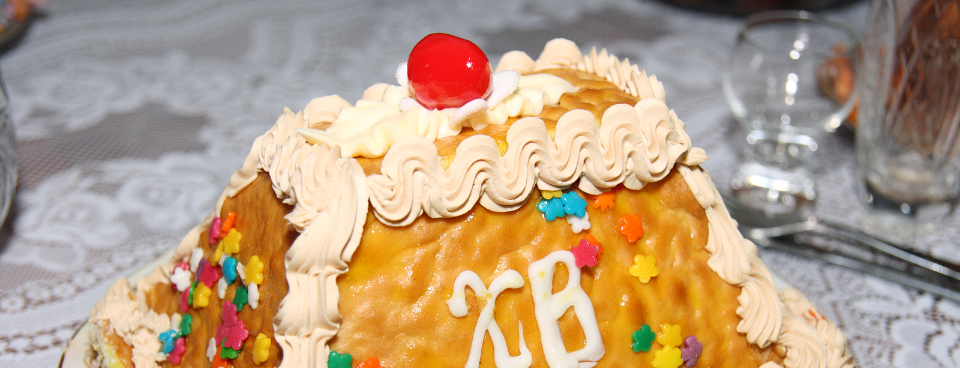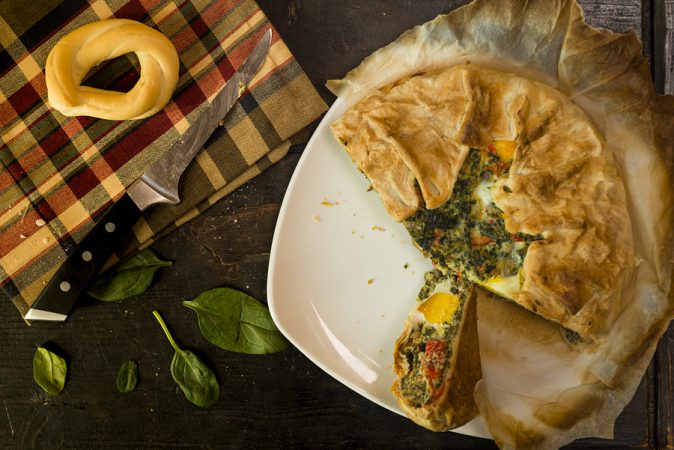10 traditional Easter dishes from around the world

Treat your taste buds and bring a generous dollop of variety to your home cooking this Easter with our rundown of traditional Easter foods from around the world. Buon appetite!
Here’s to the humble hot cross bun: a simple snack that’s delicious toasted or untoasted, day or night, butter or…marmalade. (Hey, don’t knock it until you’ve tried it.)
But there’s more to Easter cuisine than hot cross buns, choccy eggs and roast lamb. Beyond Blighty all sorts of delicious dishes await. Although if you find yourself in a restaurant in Columbia during the Easter festivities, you may want to think twice about ordering the house special…
1. Pashka | Russia
Traditional Russian Easter Paskha on table
Savoury and dessert are two words that don’t often go together, but that’s not the case in Russia. This cottage and cream cheese creation is often built in a pyramid-like shape and decorated with dried fruit and the initials XB, meaning “Christ is risen”.
2. Torta pascualina | Argentina

Literally translated, this delicacy is known as an Eastertime tart. The savoury pie features a light pastry and is typically filled with spinach, parsley, ricotta and hard-boiled eggs. The meat free dish is a popular choice during lent.
3. Capirotada | Mexico
This Mexican dish is full of symbolism – from the cinnamon sticks that are said to represent the cross and cloves that represent the nails, to the braided bread to signify Jesus’ body. The sweet bread pudding treat is particularly popular on Good Friday.
4. Chocolate bilbies | Australia

The indigenous bilby is an endangered species in Australia – a desert-dwelling marsupial and the unlikely candidate to replace chocolate bunnies during Easter. Supermarkets across the country sell the sweet silhouettes with profits dedicated to their conservation.
5. Mämmi – Finland
The Finn’s favourite Easter dessert takes days to prepare. Water, black treacle, rye flour and orange zest combine and are chilled for three to four days before being eaten cold with milk or cream.
6. Colomba di pasqua – Italy

This dove-shaped food follows the Italian tradition of sweet breads baked for religious holidays (think panettone at Christmas) but is also said to symbolise peace. The Colomba di pasqua is stuffed with candied fruit and sprinkled with almonds and pearl sugar to finish.
7. Iguanas, turtles and rodents – Columbia

Definitely the most unusual cuisine on our list, restaurants in the South American country serve indigenous green iguanas, slider turtles and large capybara rodents in restaurants over the Easter period.
8. Tsoureki – Greece
 Easter eggs and sliced tsoureki braid, greek easter sweet bread, on wood, top view, copy space
Easter eggs and sliced tsoureki braid, greek easter sweet bread, on wood, top view, copy space
Tsoureki is another meaning-filled food for the Easter season. The braided sweet bread is made of three strands that are said to represent the Holy Trinity, with boiled eggs, dyed red, symbolic of Jesus’ blood.
9. Butter lambs | Slovenia
A butter lamb takes pride of place at the dinner table in Slovenia at Easter. Catholic households make tiny sheep sculpted out of butter to symbolise spring and the new life of the season.
10. Fanesca | Ecuador
A hearty soup filled with grains, beans and bacalao (dry salted cod). The most traditional of fanesca recipes includes twelve kinds of bean to represent the twelve apostles, and cod to symbolise Jesus.
As for the humble hot cross bun…?
Trivia question: where do hot cross buns come from? Bet you didn’t know they originated in St Albans. That’s one theory anyway. Yes, it’s thought that the hot cross bun (or Albun Bun as they called it) originated here in the 14th century when Thomas Rocliffe, a monk at St Albans Abbey, developed the recipe and distributed buns to the local poor on Good Friday. Here’s to you, Thomas!
Happy Easter!
The coronavirus lockdown means that Easter 2020 is set to be one of the strangest ever. But there’s still room to bring a little novelty and variety to your celebrations – even if that means being a little more creative. However you spend your Eastertime, stay safe, stay connected and enjoy yourself.







